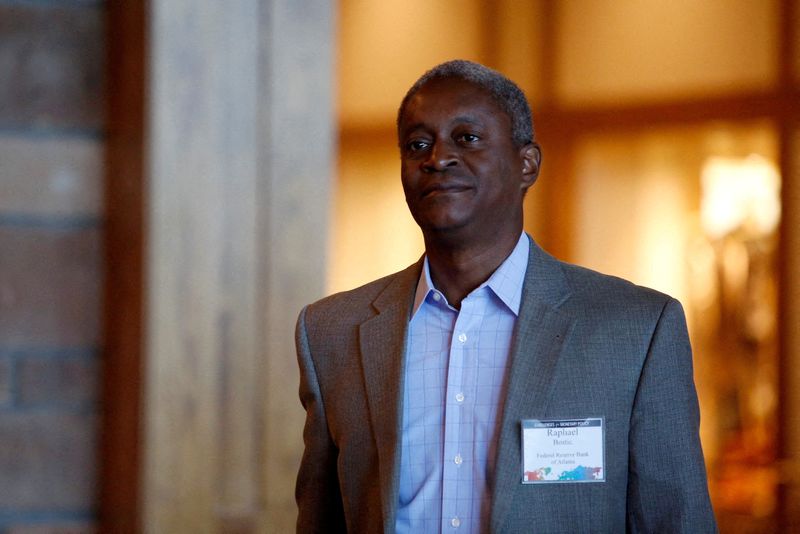In a recent discussion at the Mississippi Council on Economic Education Forum, Atlanta Federal Reserve Bank President Raphael Bostic articulated a deliberate approach to future interest rate reductions, suggesting that a gradual decrease to a range of 3% to 3.5% by the end of next year could effectively manage inflation while avoiding a recession. Bostic emphasized the importance of returning inflation to the Fed’s 2% target, stating, “I’m not in a rush to get to neutral.” He underscored that maintaining a restrictive stance on monetary policy for an adequate period is crucial to ensure inflation does not stagnate, signaling that patience is key in navigating the Fed’s trajectory.
Bostic’s vision for the Federal Reserve’s target for short-term borrowing costs intends to align with positive economic developments. He remarked that if the inflation rate continues its decline, the job market remains strong, and production shows positive growth, there will be a sufficient basis for continued rate adjustments towards neutral. The neutral policy rate, which aims neither to stimulate nor restrict growth, is anticipated to reside between 3% and 3.5%. Presently, the inflation rate stands at 2.2%, and Bostic predicted that achieving the Fed’s desired 2% target could materialize by late 2025, suggesting a strategic timeline for reaching a neutral stance in monetary policy.
The context in which Bostic formulates his outlook involves market expectations, which are currently pricing in two quarter-point interest rate cuts before year-end and additional reductions in the following year. Market analysts forecast that these adjustments could render the policy rate within the 3.25%-3.5% range by September 2025. This aligns closely with the Fed’s recent decision to implement a larger-than-expected rate cut of half a percentage point to mitigate potential downside risks in the labor market. Bostic’s action reflects a broader strategy, aiming to balance the need for economic stimulation without derailing the recovery.
Despite ongoing concerns regarding inflationary pressures, Bostic remains optimistic about the economic landscape, asserting that a recession is not part of his outlook. He has consistently maintained that sufficient economic momentum exists to counteract the effects of a restrictive monetary policy. This projection seems to be substantiated by recent labor market indicators, which have shown stronger-than-anticipated job growth and a decline in the unemployment rate to 4.1%. The resilience of the economy, as indicated by these trends, lends credence to Bostic’s belief that inflation can be effectively managed without triggering a downturn.
Even as Bostic acknowledges positive economic signals, he asserts that the Federal Reserve’s work is not complete. His sentiments reflect a cautious optimism, reiterating the necessity for a precise calibration of policy measures to underscore sustained economic health. The focus remains on ensuring inflation is adequately addressed while also permitting growth to flourish within reasonable bounds. Bostic’s assessments resonate with a broader ethos within the Fed, one that champions a balance between responsiveness to current economic realities and a steadfast commitment to long-term objectives.
In summary, President Raphael Bostic’s comments provide critical insights into the Federal Reserve’s future interest rate policies, emphasizing a patient approach aimed at achieving the 2% inflation target while navigating current economic dynamics. With a focus on the interplay between economic indicators and monetary policy, Bostic’s perspective underscores the Fed’s commitment to maintaining economic stability and fostering a sustainable growth environment in the coming years. The overarching message points towards a deliberate path that balances inflation management with the need for continued economic momentum, an integral part of the Fed’s mission in the evolving economic landscape.

